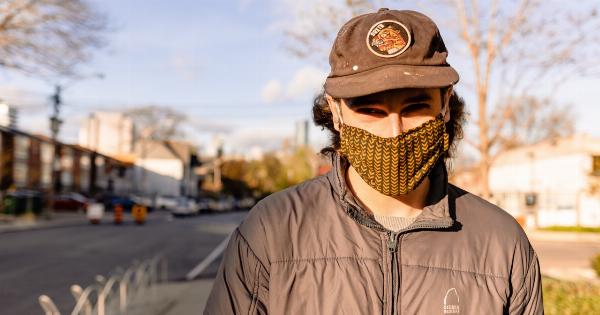Balding, or hair loss, is a common condition that affects both men and women. It can be caused by a variety of factors including genetics, hormonal changes, and aging.
Finding effective treatments for balding has long been a challenge, but recent research suggests that osteoporosis medicine may hold potential in combating this condition. This article explores the connection between osteoporosis medicine and balding, shedding light on the potential treatment options it presents.
Understanding Balding and Hair Loss
Before delving into the link between osteoporosis medicine and balding, it is important to understand the causes and mechanisms of hair loss.
Balding is typically associated with the medical condition alopecia, which involves the gradual thinning or loss of hair. Alopecia can manifest in various forms, such as androgenetic alopecia (pattern baldness), telogen effluvium (hair shedding), or alopecia areata (patchy hair loss).
Several factors contribute to hair loss, including genetics, hormonal imbalances, nutritional deficiencies, and autoimmune disorders.
Hair loss occurs when hair follicles, the structures responsible for hair growth, enter a resting phase and fail to produce new hair. The exact mechanisms behind these changes are complex and not yet fully understood.
The Link Between Osteoporosis Medicine and Balding
While the connection between osteoporosis medicine and balding may seem unconventional, recent studies have provided intriguing insights into this association.
Osteoporosis medicine, specifically those containing bisphosphonates, has been found to have a potential effect on hair growth and could hold promise as a treatment for balding.
The Role of Bisphosphonates in Hair Growth
Bisphosphonates are a class of medications commonly used to treat osteoporosis and other bone-related diseases. They work by slowing down bone resorption, the process through which bone tissue is broken down and reabsorbed by the body.
While primarily known for their bone-strengthening properties, bisphosphonates have shown interesting secondary effects on hair follicles.
Research suggests that bisphosphonates may enhance hair growth by inducing certain changes in the hair follicle microenvironment.
These medications have been found to stimulate the production of factors associated with hair growth, such as vascular endothelial growth factor (VEGF) and insulin-like growth factor 1 (IGF-1). These factors play crucial roles in regulating the hair growth cycle and promoting the development of new hair.
Moreover, bisphosphonates have shown the potential to inhibit the activity of an enzyme called 5-alpha reductase. This enzyme converts testosterone into dihydrotestosterone (DHT), a hormone strongly implicated in pattern baldness.
By reducing DHT levels, bisphosphonates may help prevent further hair loss and promote hair regrowth.
Evidence from Animal Studies
Animal studies have provided compelling evidence supporting the potential of osteoporosis medication in treating balding.
In a study conducted on mice, researchers found that the bisphosphonate drug alendronate stimulated hair follicle growth and increased hair density. The study also demonstrated that alendronate promoted hair shaft elongation and enhanced dermal thickness, which are important factors for healthy hair growth.
Another animal study investigated the effects of zoledronate, another bisphosphonate, on hair growth.
The researchers observed an increase in hair density, hair follicle size, and hair shaft thickness in the zoledronate-treated mice compared to the control group. These findings further support the hypothesis that bisphosphonates could have a positive impact on hair growth.
Potential Treatment Options for Balding
Given the promising results from animal studies, researchers are now exploring the potential of osteoporosis medicine as a treatment for hair loss in humans.
Clinical trials are underway to evaluate the efficacy and safety of using bisphosphonates and other osteoporosis medications to stimulate hair growth in patients with alopecia.
Additionally, some doctors have already started prescribing bisphosphonates off-label for the treatment of hair loss. Off-label use refers to the utilization of a medication for a condition that it has not been officially approved to treat.
While this practice may show promise, it is important to note that the effectiveness and safety of this approach have yet to be fully established.
Considerations and Potential Risks
Although the connection between osteoporosis medicine and balding is an intriguing area of research, it is crucial to approach these findings with caution.
Several factors need to be taken into account when considering osteoporosis medications as a balding treatment:.
1. Dosage and Administration: The optimal dosage and route of administration for treating balding using osteoporosis medication have not yet been established. Further research is needed to determine the most effective and safe delivery methods.
2. Side Effects: Like any medication, osteoporosis drugs can have side effects. Common side effects of bisphosphonates include gastrointestinal complications, muscle pain, and flu-like symptoms.
Determining the risk-to-benefit ratio is necessary to ensure the most suitable treatment approach.
3. Individual Variability: Osteoporosis medications may have varying effects on different individuals. Factors such as genetic predisposition and overall health may influence the response to treatment.
Personalized approaches should be considered to optimize outcomes.
Conclusion
While further research is required to confirm the link between osteoporosis medicine and balding, early studies and animal research suggest a potential connection.
The ability of bisphosphonates to stimulate hair growth and inhibit enzymes associated with hair loss holds promise for future treatments. However, it is important to approach these findings with caution and wait for additional data from clinical studies and trials.
With continued research, osteoporosis medication may become a viable option in the fight against balding, offering hope to those experiencing hair loss.






























